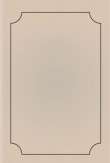You are here
قراءة كتاب Black Bass Where to catch them in quantity within an hour's ride from New York
تنويه: تعرض هنا نبذة من اول ١٠ صفحات فقط من الكتاب الالكتروني، لقراءة الكتاب كاملا اضغط على الزر “اشتر الآن"

Black Bass Where to catch them in quantity within an hour's ride from New York
I find it a good plan to let the bass have the bait from two to ten seconds, according to the way he takes it; then strike at once, giving him line freely, but keeping the thumb on the reel as a drag. Click reels are an abomination. I never jerk the rod, but hook with a twist of the wrist, remembering the golden rule that from the moment a bass takes the bait until he is landed the line must be kept tight, as one second of slack line will lose him. The point of the rod I keep bent by the pull of the fish, which is made to fight for every inch of line. I reel in whenever practicable and kill the fish on the line.
I never let a fish get among the weeds; I coax him off if possible, but if this is not practicable, I give him the butt, and either get him away or break the pole, which is preferable to losing the fish by weeds or snags. When thoroughly exhausted, I land him, of course, but am never in a hurry. If a pole net be used I sink it under him and gently lift it until the fish falls into it.
In order to appreciate black bass fishing to the full, considerable attention most assuredly must be paid to suitable tackle. Any boy may catch sun-fish, suckers, or trout with a bean pole, a piece of cord for a line and a rude nondescript bait. Black bass are a fish of an entirely different type, and the day when a black bass rod was considered to mean one weighing two pounds and measuring sixteen feet, with a chalk line, and a reel like a small clock, is delegated to the far off past of ten years ago. Some few of the old anglers made their own rods, and scored heavily in their takes of fish, to the wonder and amazement of the other fishermen who still adhered to the old heavy pattern.
My idea of the best rod for black bass fishing is the happy medium between the trout fly rod, and the trout bait rod. The one I generally use is eight feet three inches long, weighs nine ounces, is three-jointed, the balance perfect, and the bend true from tip to butt. It was made by H. H. Kiffe, 318 Fulton street, Brooklyn. I have killed many bass with this rod during the past two seasons, some weighing as high as four pounds, and have also caught pickerel weighing eight pounds with the same pole. The butt is white ash, and the second joint and tip finely selected lancewood. The butt has a wound grip, and the metal tip is of the four-ring pattern, the strongest and lightest made. I prefer standing guides. Some people prefer Greenheart or Wasahba for tips, but lancewood or red cedar is the best, I think.
The great fault in many rods is want of "back," which results from a too slender butt. This produces a double action in the rod, and prevents a clear satisfactory cast. In England this quality was made a specialty for salmon rods some years ago, it being supposed that it increased the length of the cast. Recent experiences proved this to be a fallacious idea, and such a rod required quite an education to use with any degree of accuracy.
If a man can throw a minnow thirty yards with any degree of accuracy, he should be well satisfied, as that is more than sufficient for average bass fishing.
A peculiar, but, I think, mistaken idea is that a rod should be in proportion to a man's size. One can understand this idea in regard to a gun for which a man should be measured as for a coat, but with a rod it is different, and should be made to vary with the type of fishing practised. The difference in weight being only a few ounces exposes the foolishness of this theory. All that matters is the question of balance; if that is all right, the size or weight matters very little.
A more important point is, that a cheap rod is always a dear rod, in price alone. As in anything else, work and quality of material go for everything, and if a good sound rod is required, a fair price must be paid to some good maker for it.
The line is a most important item, and it is always best to give


